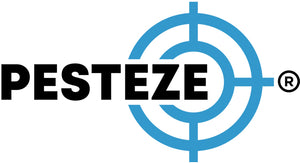ADVANCED RODENT CONTROL METHODS

ADVANCED RODENT CONTROL METHODS
SUMMARY
Traditional traps and poisons aren’t always enough to manage rodent infestations. Learn about high-tech, professional-grade, and integrated pest management solutions that offer more effective and humane rodent control.
FEATURES
-
Electronic Traps: Delivers quick, humane kills with minimal cleanup.
-
Smart Monitoring Systems: Uses sensors and alerts to track rodent activity in real time.
-
Ultrasonic Repellents: Emits high-frequency sound waves to deter rodents non-lethally.
-
Professional-Grade Baits: Uses scientifically-formulated attractants and delayed-action toxins.
-
Rodent-Proof Construction: Involves sealing and modifying structures to block entry points.
-
Integrated Pest Management (IPM): Combines environmental controls, exclusion, and monitoring for long-term success.
DESCRIPTION
For homeowners and businesses facing persistent or large-scale rodent problems, basic traps and over-the-counter poisons may not suffice. Advanced rodent control methods provide more reliable, efficient, and in many cases, humane options to combat infestations.
Electronic traps are a modern alternative to snap traps, using sensors and electricity to deliver an instant, humane kill. These traps often include indicator lights or Bluetooth notifications, alerting you when a rodent is captured—eliminating the need for constant checking.
Smart monitoring systems are the future of pest control. These include digital devices placed in high-risk zones that track rodent movement, capture data, and alert pest control operators via mobile apps. This allows for precise targeting of problem areas and faster response times.
Ultrasonic repellents work by emitting high-frequency sound waves that are intolerable to rodents but silent to humans and most pets. While not a complete solution, they serve as an effective layer of defense when combined with other control measures.
For high-pressure infestations, professional-grade baits are more potent and often contain attractants specifically engineered to lure rodents. Many of these have delayed effects, allowing rodents to return to nests before dying—helping eliminate entire colonies.
Rodent-proof construction involves identifying and sealing off all entry points with chew-proof materials like steel wool, metal flashing, and hardware cloth. This long-term exclusion strategy is often part of a comprehensive inspection and retrofit done by professionals.
Integrated Pest Management (IPM) is a holistic approach that goes beyond extermination. It includes sanitation improvements, habitat modification, exclusion techniques, regular monitoring, and minimal chemical usage. This method is environmentally responsible and sustainable, especially in sensitive areas like food production or schools.
Using these advanced rodent control methods ensures better results and reduces the chances of reinfestation. Whether you're managing a commercial facility or trying to reclaim your home from rodents, adopting modern strategies is key to lasting success.
- Nikita Gulrajani


Comments 0